Pain is universal and this week, Marly Hill, RMT wanted to dive into understanding how pain works and how therapeutic massage and Craniosacral Therapy can help relieve symptoms.
Understanding Chronic Pain
You are not alone. An estimated six million people suffer from chronic pain in Canada. That’s roughly 20 percent of the population! Chronic pain is not uncommon, but it is often misunderstood and difficult to treat or provide relief for. It is so important to understand how pain ‘works’ to understand how to treat it, or at least provide relief.
We know that Chronic pain is an unpleasant sensory and emotional experience and is unique to the individual experiencing it. The biological mechanisms of pain are transferred by the nervous system to other areas of the body. Throughout our bodies, we have sensory neurons, these neurons send pain signals to the brain. If the brain interprets these signals as dangerous, we experience pain to warn us. It’s the fight or flight mechanism we so often hear about.
The nervous system can change in response to a number of factors. These changes can make us more or less sensitive to painful stimuli or even result in a persistent state of heightened pain sensitivity.
We can use this flexibility of our nervous system to manage and diminish the experience of pain.
There are three main mechanisms that underpin pain:
- Nociceptive pain arises from damage to body tissue and is the typical pain one experiences as a result of injury, disease, or inflammation. It is described as a sharp, aching, or throbbing pain.
- Neuropathic pain arises from direct damage to the nervous system itself. It is typically described as burning or shooting pain, and the skin can be numb, tingling, or extremely sensitive to even light touch.
- Nociplastic pain arises from a change in how sensory neurons function, rather than direct damage to the nervous system. Sensory neurons become more responsive (sensitization). It is similar to neuropathic pain.
Types of Pain
There are also differences in pain; acute pain and chronic pain.
Individuals will most of the time experience temporary pain- a warning something is wrong; something has caused or may cause damage to some part of our body. This is acute pain, which usually resolves itself over time as the body heals.
Chronic pain is a pain in one or more anatomical regions that:’
- Persists or recurs for longer than three months; and,
- Is associated with significant emotional distress (e.g., anxiety, anger, frustration, depressed mood) and/or significant functional disability (interference in activities of daily life and participation in social roles); and,
- The symptoms are not better accounted for by another diagnosis
“Chronic primary pain includes the following sub-diagnoses: chronic widespread pain, complex regional pain syndrome, chronic primary headache or orofacial pain, chronic primary visceral pain, and chronic primary musculoskeletal pain. Chronic secondary pain is diagnosed when pain originally emerges as a symptom of another underlying health condition. It may persist even after the condition has been treated, in which case it is also considered a disease in its own right. Common examples of chronic secondary pain include chronic cancer pain, chronic post-surgical or post-traumatic pain, chronic neuropathic pain, chronic secondary headache, chronic secondary visceral pain, and chronic secondary musculoskeletal pain.” – Health Canada, 2019 –
How Can Massage Help with Chronic Pain?
The benefits of massage therapy cannot be understated. Some of these benefits include increased blood flow and enhanced circulation, muscle relaxation, which subsequently improves range of motion; increased endorphin levels; improved sleep and lessened bouts of insomnia.
Pain can be especially receptive to the benefits of massage therapy.
Massage therapy can help to relieve both acute and chronic pain symptoms, including reducing tension throughout muscles, tendons and ligaments, relieving stress and anxiety, boosting circulation and promoting the health of tissues, and enhancing the parasympathetic nervous system to reduce pain signals to and from the brain.

Massage therapy is focused on the body’s specific needs and pain threshold. Some people with chronic pain find that deep tissue treatments increase their pain responses and prefer a lighter, more relaxing touch. In contrast, others need deeper pressure to relieve underlying tension. The type of massage you receive should always be tailored to fit within your personal preference and not exceed your pain tolerance.
What is Craniosacral Therapy and How Can This Help with Pain?
CranioSacral Therapy (CST) is a gentle hands-on therapy used to release tensions that are deep within the body to relieve pain and dysfunction and improve whole-body health and performance.
Using a gentle touch, practitioners free restrictions in the soft tissues surrounding the central nervous system (CNS). CST has become more frequently used as a preventive health measure for its ability to reinforce resistance to disease, and because of its effectiveness for a variety of medical issues associated with pain and dysfunction.
There are few structures that have as much influence over the body’s ability to function properly as the brain, and spinal cord, which make up the CNS and the CNS is heavily influenced by the craniosacral system (the membranes and fluid that surround, protect and nourish the brain and spinal cord).

Every day the body sustains various stressors and strains that it must work to compensate for. Unfortunately, over time these changes often cause body tissues to tighten and distort the craniosacral system. These distortions can then cause tension to form around the brain and spinal cord resulting in restrictions. This often creates a barrier to the robust performance of the CNS and other systems in the body that interact with it.
This is where CST comes in. These restrictions can be located and even corrected using simple methods of CST touch. The CST practitioner uses their hands to evaluate the craniosacral system by gently feeling various body locations to test for the ease of motion and rhythm of the cerebrospinal fluid pulsing around the brain and spinal cord. Soft-touch techniques are then used to free restrictions in any tissues influencing the craniosacral system.
When the environment around the brain and spinal cord are normalized, this enhances the body’s ability to self-correct.
CranioSacral Therapy can alleviate a wide variety of dysfunctions, from chronic pain and sports injuries to stroke and neurological impairment. For individuals who experience chronic pain along with stress and fatigue, CST may be a beneficial treatment.
Although this is a gentle and relaxing treatment, many individuals find it to be more beneficial at accessing the deeper root cause of their pain and tension and providing the release they need. The majority of individuals who experience chronic pain symptoms prefer a treatment plan that includes several aspects of therapeutic massage as well as craniosacral therapy techniques to address all aspects of their pain.
Some of the most common chronic conditions treated with CST and Therapeutic Massage are migraines/headaches, chronic neck and back pain, concussions, chronic fatigue, fibromyalgia, stress-related issues, temporomandibular joint syndrome (TMJ) and post-traumatic stress disorder (PTSD).
If you are experiencing any of the above conditions or other symptoms of chronic stress and pain, regular massage therapy appointments can help relieve your symptoms and get your body back to its optimal state. To book an appointment with Marly Hill, RMT at the IV Health centre, email us at [email protected]
-Marly Hill, RMT


